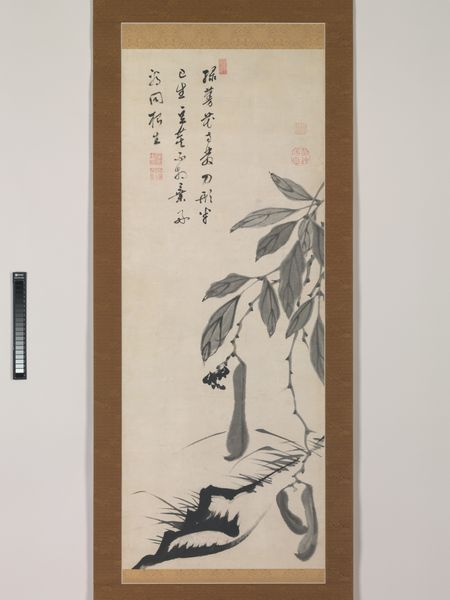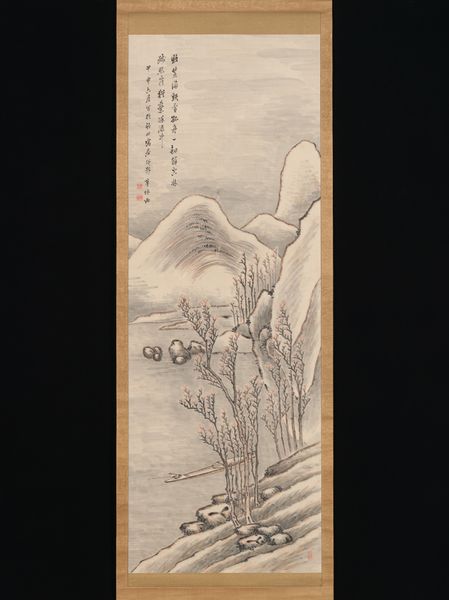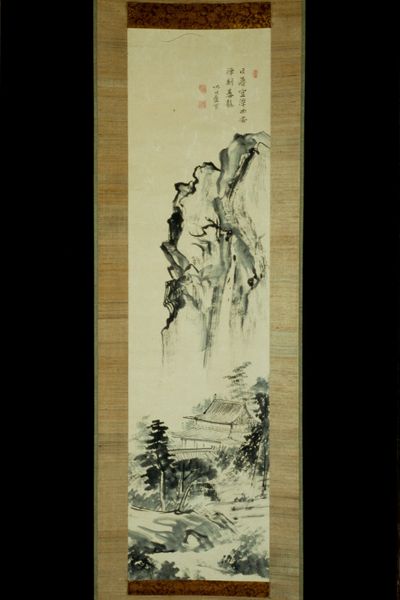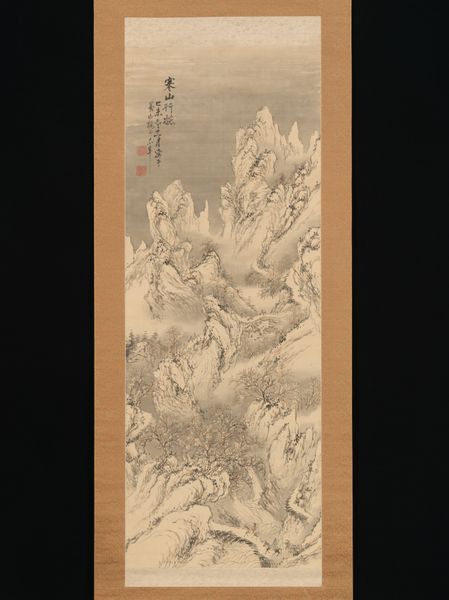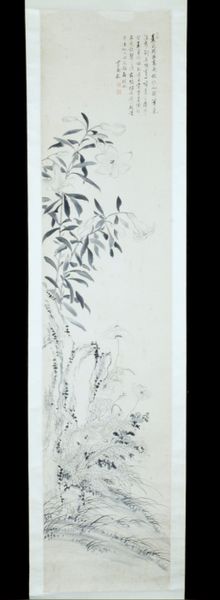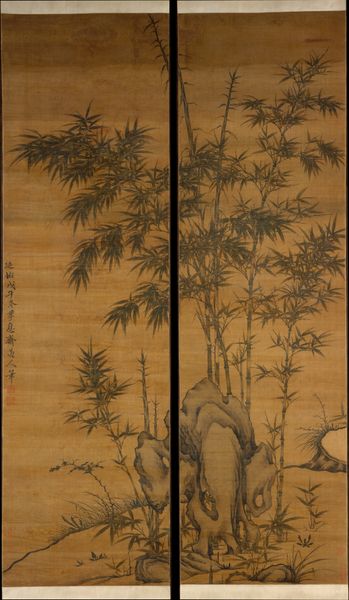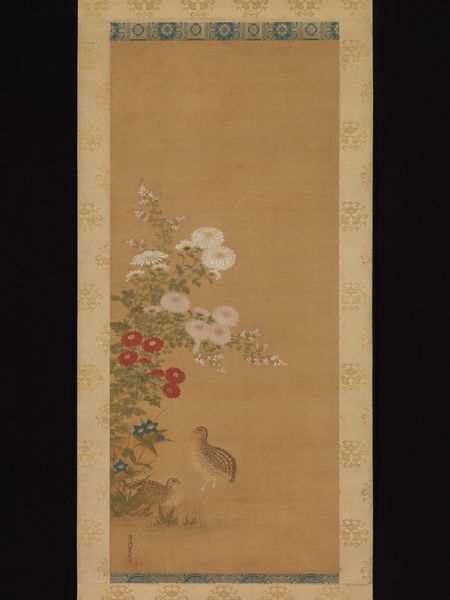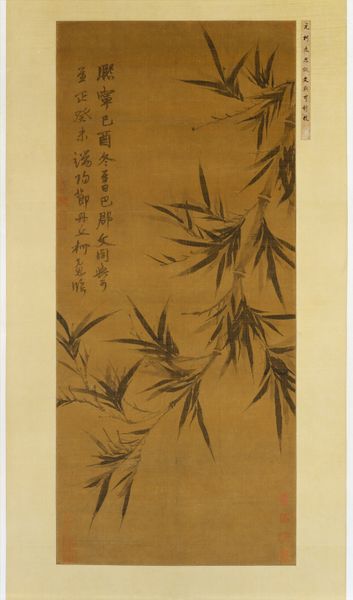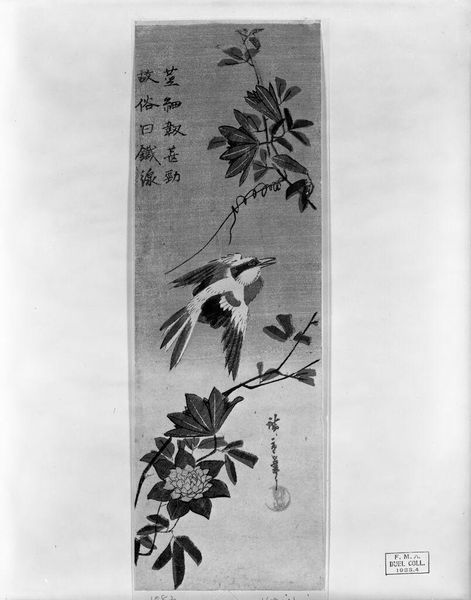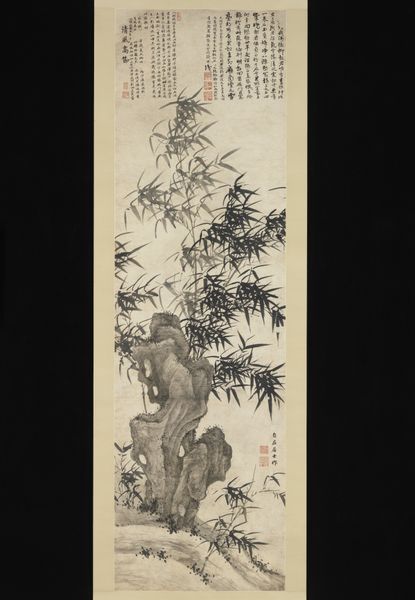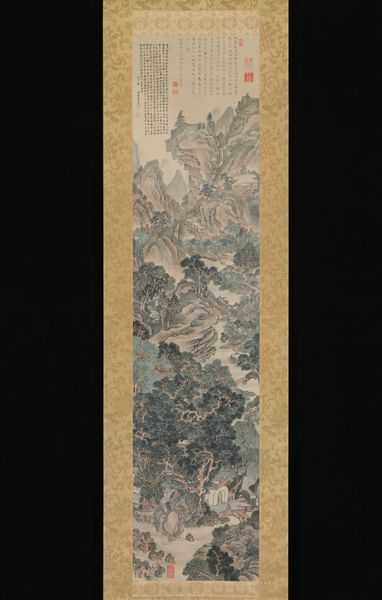
drawing, carving, ceramic, wood
#
drawing
#
carving
#
asian-art
#
landscape
#
ceramic
#
figuration
#
form
#
orientalism
#
ceramic
#
china
#
line
#
food art
#
wood
#
calligraphy
Dimensions: 8 1/2 x 2 7/8 x 13/16 in. (21.59 x 7.3 x 2.06 cm)
Copyright: Public Domain
Editor: So, here we have Ping Ts'un's "Wrist Rest" from around 1800, carved from wood. The linear detail showing a crane, plant and some calligraphy gives it an understated elegance, wouldn't you agree? What stands out to you when you see this? Curator: I see more than just elegance; I see a reflection of literati culture. These objects weren't merely functional. The choice of bamboo itself speaks volumes. Consider bamboo’s symbolic weight: resilience, integrity, flexibility – virtues valued within Confucian ideology. How does this inform your reading of it? Editor: It makes me think about the owner, then; it would have been an elite person, someone trying to embody these virtues in their daily practice of calligraphy or painting. Curator: Precisely. And beyond the material, examine the inscription and imagery. Who was commissioning this, and for what audience? Such objects functioned within networks of gift exchange, subtly displaying taste and social standing, reflecting a commitment to refined aesthetics. What can be gleaned about the power dynamics at play in 18th-century China? Editor: It shows that art and these objects were part of communicating one's place in society and even trying to elevate it. Were the workshops mass-producing similar objects, or would this have been very exclusive? Curator: Probably somewhere in between. But even if there were similar objects, each detail, inscription, the quality of carving - these all contributed to its uniqueness and, therefore, its value. This seemingly simple wrist rest is really quite revealing of its world. Editor: I hadn't considered all those social implications! Now, I look at this piece, and it tells a bigger story about status, values, and artistry intertwining. Thanks for sharing that perspective.
Comments
minneapolisinstituteofart almost 2 years ago
⋮
Used to support a painter's or calligrapher's wrist while doing meticulous brushwork, wrist rests became popular in the 17th century as literati accoutrements. Though often made of bamboo, examples in boxwood, jade and ivory have also survived. The carved decoration here features herons in a lotus pond. The signature and seals at the end of the poem cite Ping Ts'un as the carver. The use of natural materials and the inclusion of a poem complementing the scene clearly reflect literati values.
Join the conversation
Join millions of artists and users on Artera today and experience the ultimate creative platform.
